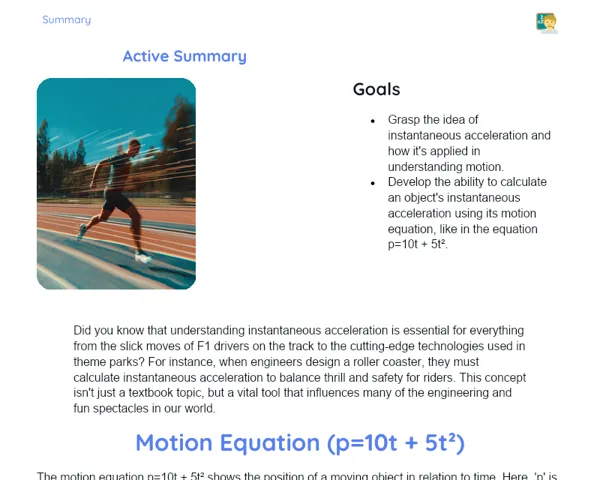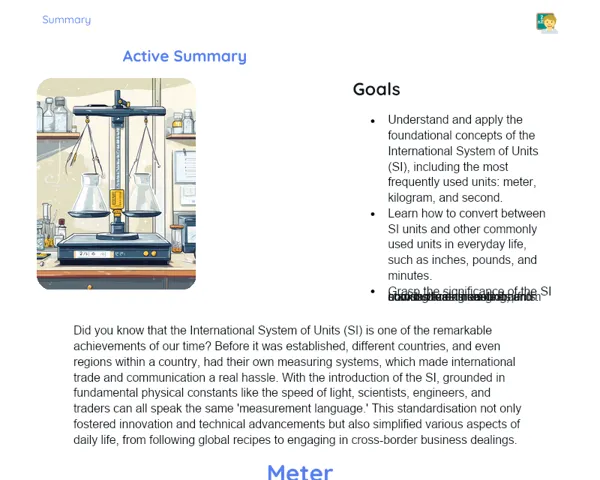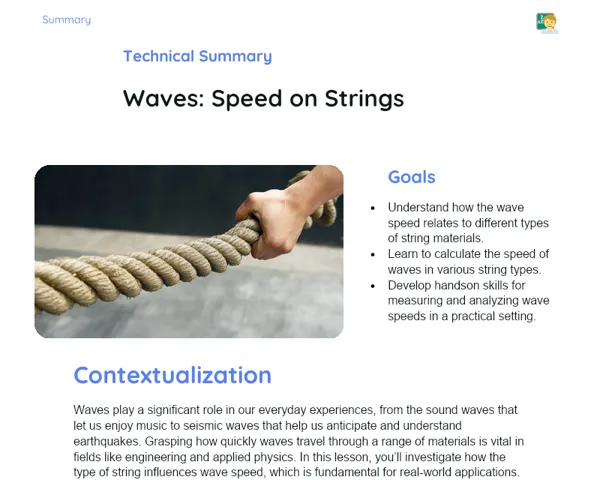Goals
1. Understand how beats occur from the overlapping of two waves with slightly different frequencies.
2. Calculate the beat frequency using the frequencies of the individual waves.
Contextualization
Beats are a captivating phenomenon that arises when two sound waves of slightly different frequencies overlap. You can hear this effect, for example, when two musicians play nearly identical notes, leading to a pulsing variation in sound intensity. This phenomenon extends beyond music and finds practical applications in various scientific and engineering fields. In medical ultrasonography, for instance, beats help in frequency analysis, enhancing the accuracy of medical diagnoses. Furthermore, in telecommunications, beats are employed to identify and rectify signal interference.
Subject Relevance
To Remember!
Wave Interference
Wave interference occurs when two or more waves overlap and combine their amplitudes, resulting in a new wave. This phenomenon can lead to constructive (increasing amplitude) or destructive (decreasing amplitude) effects, depending on the phases of the waves involved.
-
Constructive Interference: Happens when the waves align, producing a new wave with greater amplitude.
-
Destructive Interference: Occurs when the waves are misaligned, creating a new wave with reduced amplitude.
-
Importance: Wave interference is a fundamental concept in physics with applications in various domains like acoustics, optics, and telecommunications.
Beat Frequency
Beat frequency is the frequency that results from the difference between two waves that have slightly different frequencies. This effect manifests as a variation in sound intensity over time, creating a pulsating rhythm.
-
Calculation: Beat frequency is determined using the formula f_beat = |f1 - f2|, where f1 and f2 are the frequencies of the two waves.
-
Auditory Perception: It can be heard as a throbbing in sound, a common occurrence when tuning musical instruments.
-
Applications: Used in tuning instruments, ultrasound diagnostics, and rectifying interference in radio signals.
Practical Applications of Beats
Beats serve numerous practical purposes in music, telecommunications, and medicine. These applications underscore the relevance of the phenomenon not just in theory, but also in practical and technological resolutions.
-
Music: Utilised in tuning instruments, allowing musicians to fine-tune frequencies for harmony.
-
Telecommunications Engineering: Crucial for detecting and correcting radio signal interference, thus enhancing communication quality.
-
Medicine: In ultrasonography, beats enhance the accuracy of diagnoses by analysing sound wave return frequencies.
Practical Applications
-
Musical instrument tuners utilise beats to adjust string or tube frequencies.
-
Telecommunications engineers leverage beats to detect and resolve interference in radio signals.
-
In ultrasonography, beats facilitate frequency analysis, improving the accuracy of medical diagnoses.
Key Terms
-
Wave Interference: A phenomenon that occurs when two or more waves overlap and combine their amplitudes.
-
Beat Frequency: The frequency that arises from the difference between two waves of slightly different frequencies.
-
Constructive Interference: A type of interference characterised by the waves being in phase, resulting in increased amplitude.
-
Destructive Interference: A type of interference where the waves are out of phase, leading to decreased amplitude.
Questions for Reflections
-
How can a proper understanding of beats assist you in tackling practical challenges in your future career?
-
What other fields, apart from music, telecommunications engineering, and medicine, could benefit from understanding beats?
-
In what everyday situations outside of school can wave interference be observed?
Practical Challenge: Analyzing Beats at Home
Conduct an experiment to observe and analyze beats using sound sources readily available at home.
Instructions
-
Find two household items that can produce sounds with slightly different frequencies (for example, two glass cups filled with different levels of water).
-
Play the items together and notice the changes in sound intensity (beats).
-
Record the sound with a recording app on your phone.
-
Utilise audio analysis software (like Audacity) to visualise the sound waves and identify the beats.
-
Measure the frequencies of the sounds created and calculate the beat frequency using the formula: f_beat = |f1 - f2|.
-
Document your findings, calculations, and conclusions in a brief report.



